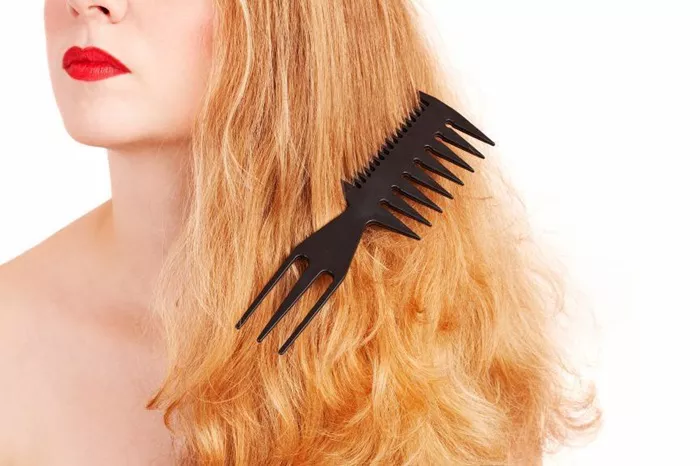Burnt hair is a common issue resulting from excessive heat styling, exposure to chemicals, or accidental burns. The damage can lead to dryness, breakage, and loss of shine. Repairing burnt hair requires a combination of professional treatments, home remedies, and changes in hair care practices. This article provides a comprehensive guide to understanding, treating, and preventing burnt hair.
Understanding Hair Damage
What Causes Hair to Burn?
Hair burns when exposed to high temperatures or harsh chemicals. Common causes include:
Excessive Heat Styling: Frequent use of flat irons, curling wands, and blow dryers at high temperatures.
Chemical Treatments: Overuse of hair dyes, relaxers, and perms.
Environmental Factors: Exposure to the sun, chlorine, and saltwater.
Accidental Burns: Contact with hot objects or flames.
Identifying Burnt Hair
Burnt hair may exhibit the following signs:
Dryness: Hair feels brittle and rough.
Breakage: Frequent split ends and hair strands breaking easily.
Loss of Shine: Dull and lifeless appearance.
Texture Changes: Hair may become frizzy or uneven in texture.
Immediate Steps to Take
1. Avoid Further Heat Exposure
Stop using heat styling tools immediately to prevent further damage. Let your hair air dry rather than using a blow dryer. Avoid exposing your hair to direct sunlight or chlorinated water.
2. Trim Damaged Ends
Cutting off the burnt or split ends can prevent further damage from traveling up the hair shaft. A trim helps restore your hair’s health and manageability.
3. Wash with Mild Shampoo
Use a sulfate-free, moisturizing shampoo to cleanse your hair without stripping away essential oils. Look for products designed for damaged or dry hair.
4. Apply a Deep Conditioning Treatment
A deep conditioning treatment helps restore moisture and repair damage. Use a product rich in proteins and nutrients. Leave it on for the recommended time to allow for deep penetration.
Effective Home Remedies
1. Coconut Oil Treatment
Coconut oil is known for its moisturizing and restorative properties.
How to Use: Warm a few tablespoons of coconut oil and apply it to your hair. Focus on the ends and leave it on for at least an hour before washing out.
2. Aloe Vera Gel
Aloe vera soothes the scalp and adds moisture to damaged hair.
How to Use: Apply fresh aloe vera gel directly to your scalp and hair. Leave it on for 30 minutes before rinsing with lukewarm water.
3. Honey and Olive Oil Mask
Honey is a natural humectant, and olive oil provides essential fatty acids.
How to Use: Mix equal parts honey and olive oil. Apply the mixture to damp hair and leave it on for 20-30 minutes before rinsing.
4. Avocado Treatment
Avocado is rich in vitamins and fats that nourish burnt hair.
How to Use: Mash a ripe avocado and apply it to your hair. Leave it on for 30 minutes and rinse thoroughly.
SEE ALSO: Does Kenya Moore Hair Care Really Work?
Professional Treatments
1. Bond Rebuilding Treatments
Professional bond-repair treatments like Olaplex work at a molecular level to restore the internal structure of damaged hair.
How It Works: These treatments reconnect broken disulfide bonds in the hair, strengthening it from within.
2. Protein Treatments
Protein treatments, such as those containing keratin or silk proteins, help repair the structural integrity of the hair.
How It Works: Proteins penetrate the hair shaft to rebuild damaged areas, improving strength and elasticity.
3. Moisture Treatments
Moisture treatments are designed to replenish lost hydration and restore softness.
How It Works: These treatments infuse the hair with essential moisture, improving its overall health and appearance.
4. Professional Trims and Cuts
A professional stylist can provide precise trims and cuts to remove severely damaged sections and shape your hair for better manageability.
Preventing Future Damage
1. Use Heat Protectants
Before using heat styling tools, apply a heat protectant spray to shield your hair from high temperatures.
2. Avoid Overuse of Heat Tools
Limit the frequency of using heat styling tools. Allow your hair to air dry whenever possible.
3. Opt for Chemical-Free Products
Choose hair products that are free from harsh chemicals and sulfates. Opt for natural or organic alternatives.
4. Maintain a Healthy Diet
A balanced diet rich in vitamins and minerals supports hair health. Include foods high in omega-3 fatty acids, vitamins A, C, D, and E, and proteins.
5. Stay Hydrated
Drinking plenty of water helps keep your hair and scalp hydrated from within.
Daily Hair Care Tips
1. Use a Wide-Tooth Comb
Avoid using a fine-tooth comb on wet hair to reduce breakage. Use a wide-tooth comb or your fingers to detangle gently.
2. Avoid Tight Hairstyles
Tight hairstyles can cause additional stress and breakage. Opt for loose styles that do not pull on the hair.
3. Protect Hair While Sleeping
Use a silk or satin pillowcase to reduce friction and prevent breakage. Consider wearing a silk scarf or bonnet to protect your hair while you sleep.
Conclusion
Repairing burnt hair involves a combination of immediate actions, home remedies, and professional treatments. By understanding the causes of hair damage and implementing effective repair strategies, you can restore your hair’s health and prevent future issues. Incorporate these practices into your hair care routine for healthier, more resilient hair.
This guide provides a detailed approach to repairing burnt hair, helping you regain your hair’s natural beauty and strength.

